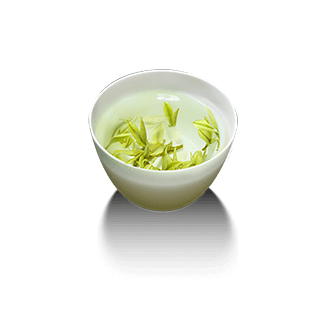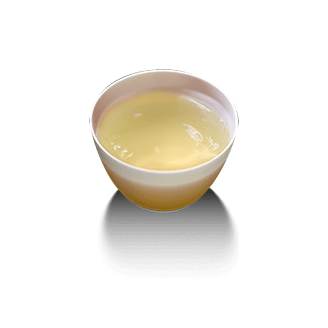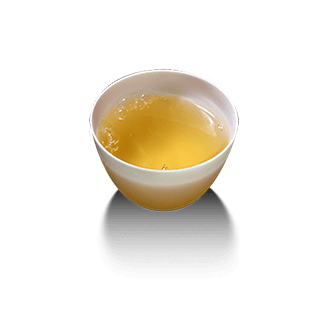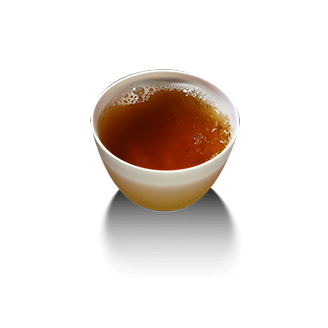
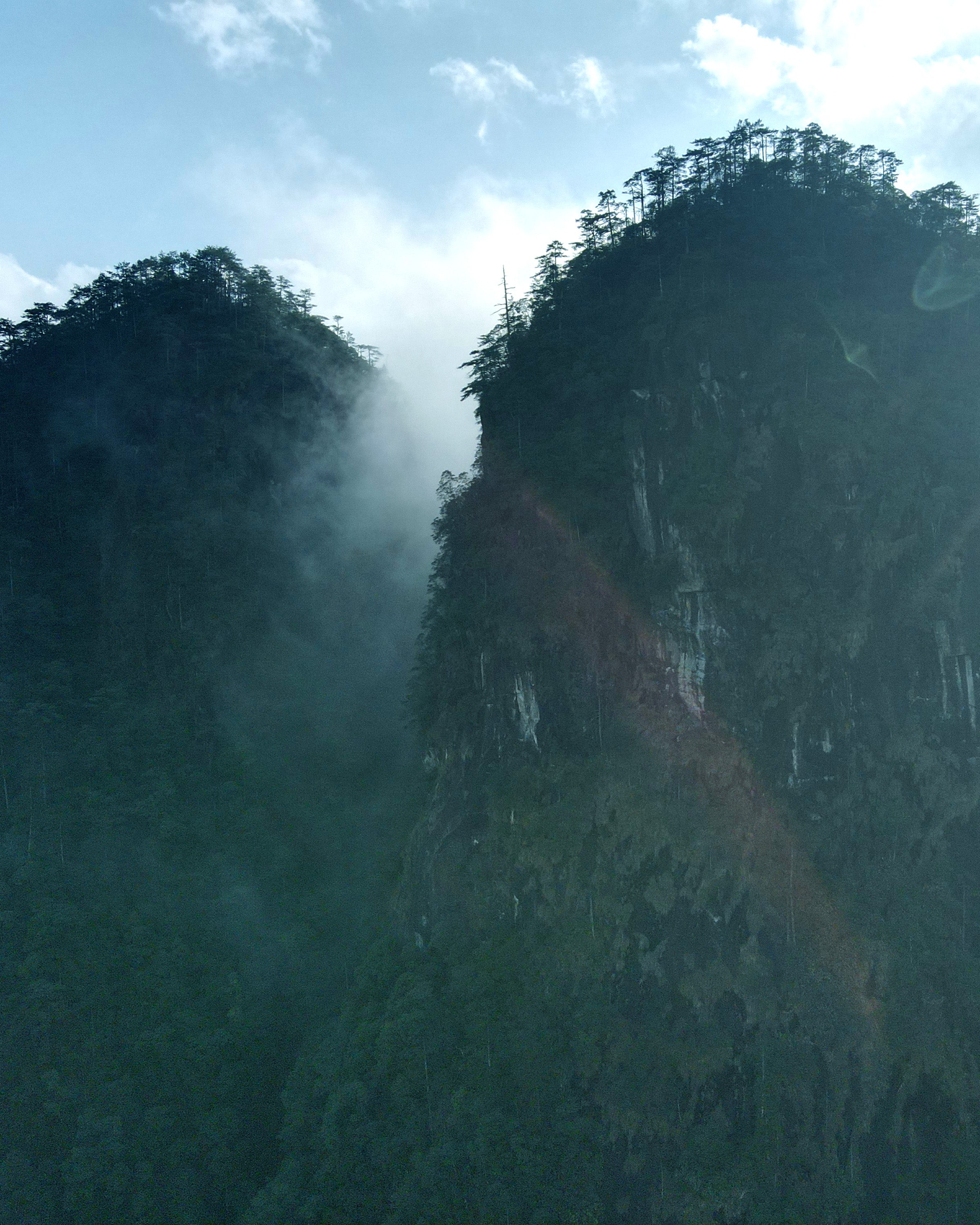


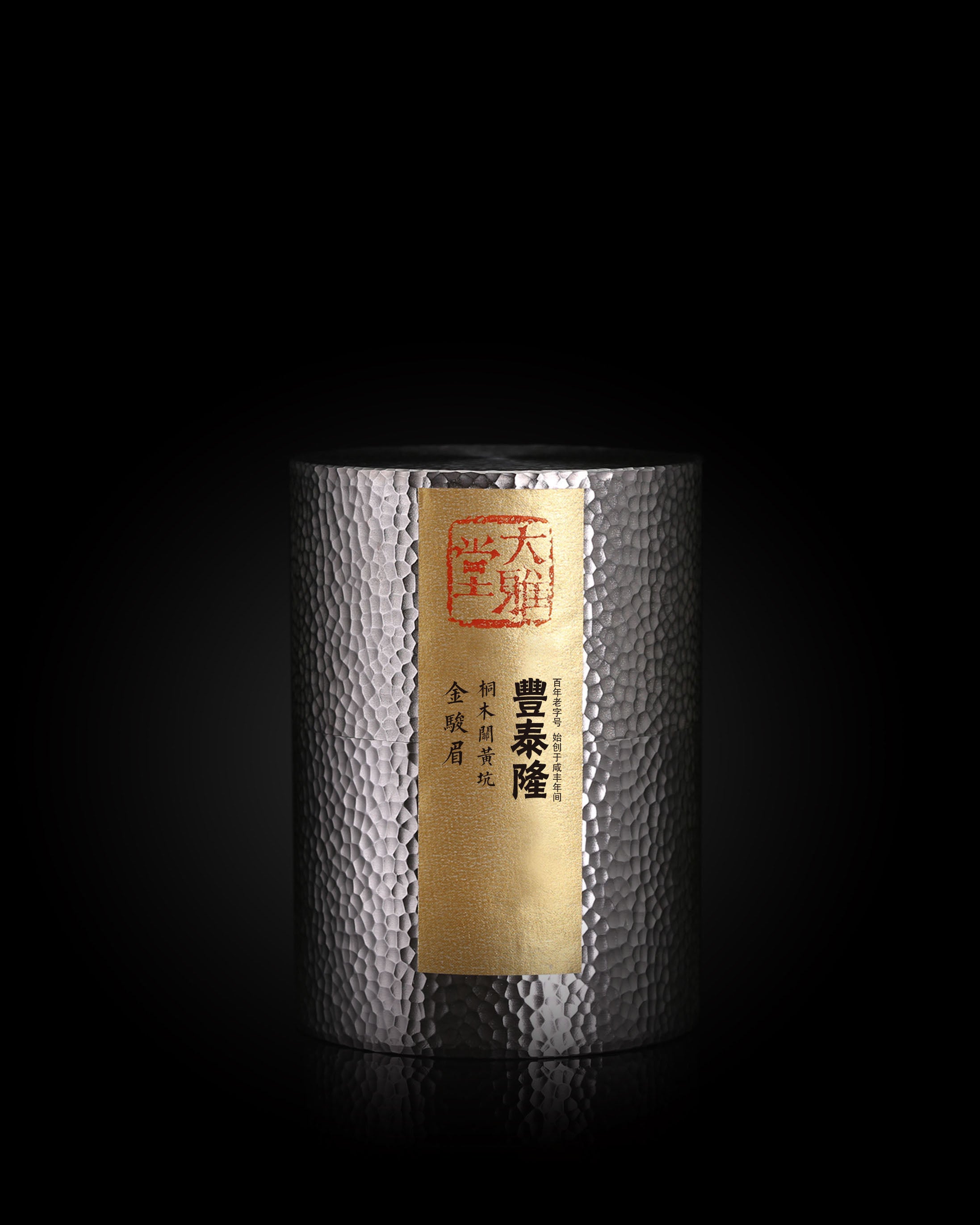
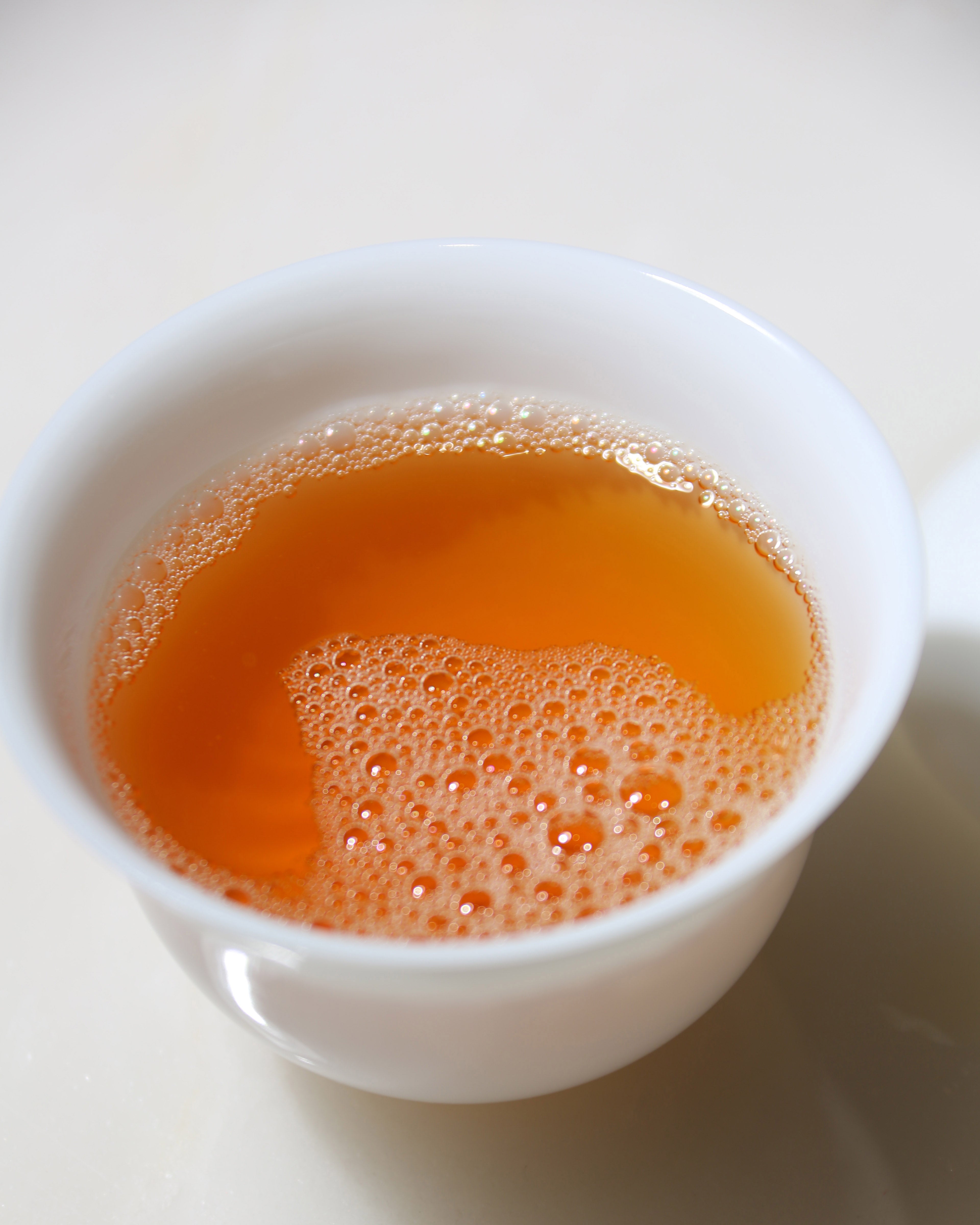
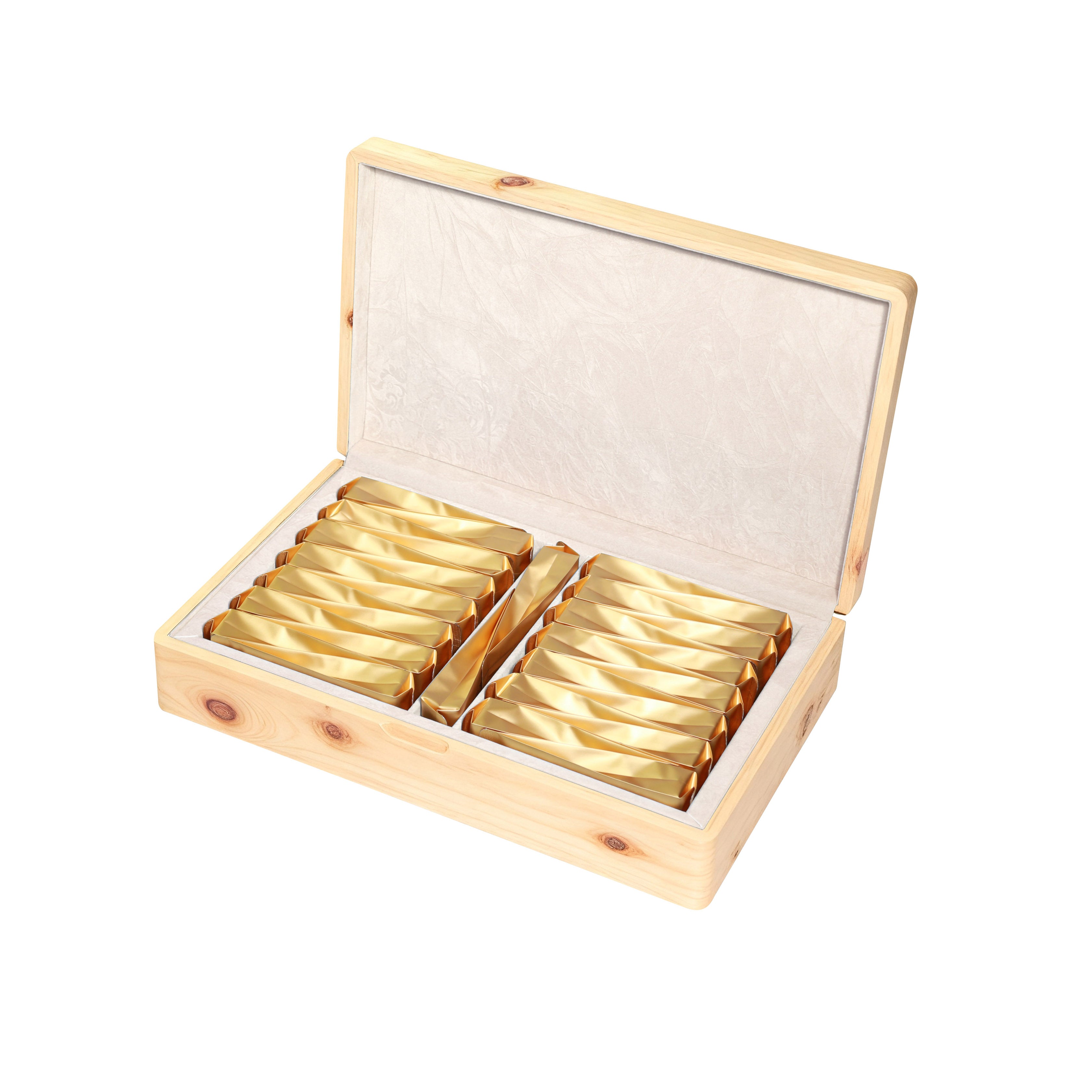
Tongmu Pass Jinjunmei








Tongmu Pass Jinjunmei
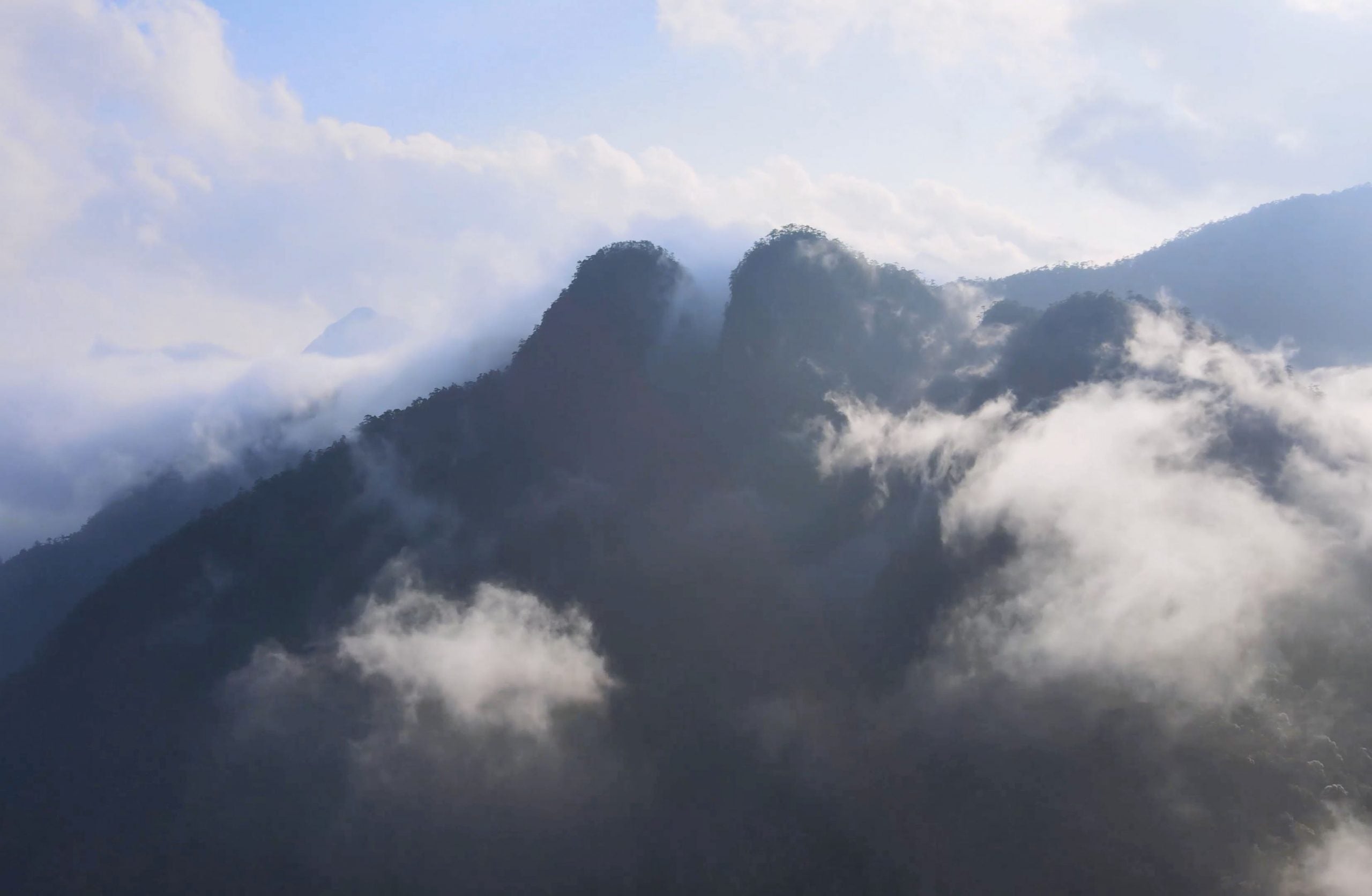
On the thirteenth day of the eleventh month of the Gengzi year, I once again stepped into Tongmu Pass. The mountains are high and the valleys are deep, shrouded in clouds and mist all year round. Upon entering, I felt as if I were surrounded by a thousand mountains and mist, and all things were in a state of primordial chaos.
The aroma of tea from Tongmu Pass lingers, naturally intertwined with over five thousand plant species. Nourished by morning dew, it thrives amidst swirling mists, rugged rocks, lush grasses, and blooming wildflowers—a natural tapestry of varying heights and depths. The high humidity, frequent fog, and gentle sunlight promote an increase in the tea's amino acids, chlorophyll, and nitrogen compounds. This results in slow-growing yet intensely aromatic teas. This unique microclimate is a gift from nature accumulated over millions of years, beyond the reach of any single individual.

The familiar scene before me reminded me of 2015. That autumn, through the introduction of relevant departments in Fujian, we visited Jiang Yuanxun and Liang Junde respectively. The two made invaluable contributions to the research and promotion of Jin Jun Mei tea.
In Jiang Yuanxun's tea room, we savored several varieties of Jin Jun Mei tea while discussing its development. Then, Mr. Jiang slowly recounted the history of black tea's birth. He said, "Before 1940, Tongmu Village mainly produced green tea. Once, an army passed through and stayed overnight at the tea factory. The tea workers couldn't finish roasting the fresh leaves in time, causing them to turn red. Combined with the smoke from the army cooking, the final tea was dark and oily, with a smoky aroma, but unexpectedly became very popular. Thus, Lapsang Souchong black tea was born."
While we were enjoying tea at Mr. Liang Junde's home, he recounted in detail: "In 2004, when I was at the Jiangzong Factory, two tea friends from Beijing approached us, hoping we would try making black tea from tender single buds. I agreed to give it a try. After several adjustments to the process, by the following year, we and the tea connoisseurs were very satisfied with the finished tea. Because its shape resembles an eyebrow, delicate and beautiful, and the selected buds are precious and covered in golden down, we took the character 'Jin' (金, meaning gold) from it, and also took one character from my name, Jun (骏, meaning swift), and named it Jin Jun Mei (金骏眉, meaning Golden Jun Eyebrow)." Listening to their story and looking at the Jin Jun Mei before us, it was indeed indeed shaped like a small, tightly rolled eyebrow, with a golden-yellow liquor, an aroma that blended floral, fruity, and honey notes, and a mellow, sweet taste.
Since we hadn't made an appointment beforehand for our visit to Tongmu Pass, we decided not to disturb the two teachers—after all, the scene of sitting around enjoying tea and listening to the story of Jin Jun Mei tea in 2015 was already a precious tea connection. Although we didn't visit old friends again, we could still find a similar warmth in the daily life of Tongmu Pass.
We visited outside of tea-making season, but still sampled tea from several households. Tongmu Pass has a beautiful ecosystem, though the monkeys were quite mischievous, climbing onto the roof of our car – just like in 2015. We also watched with great interest as villagers wove bamboo baskets, experiencing the local customs and traditions. Afterwards, we left Tongmu Pass.
Heaven and earth are in harmony, and all things are fragrant. This trip to Tongmu Pass was fleeting; I waved goodbye, leaving without taking a single cloud, only memories.
Tongmu Pass Jin Jun Mei Tea Tasting
Year : 2024
Grade : Premium single bud, made from 60,000-80,000 buds per pound
Origin : Tongmu Pass, Xingcun Town, Wuyishan City, made from wild tea buds grown at altitudes of 1200-1800 meters in Tongmu Pass.
Variety : Wild group species (vegetable tea)
Craftsmanship : Jin Jun Mei tea-making techniques
Dry tea appearance : Jin Jun Mei has small and tightly rolled leaves, made of tender buds, with a color that is a mix of gold, yellow, and black. The golden yellow part is the tea's downy hairs and golden tips, which make up about 30% of the tea. The dry tea has a sweet aroma with hints of ripe fruit, without any off-flavors.
The soup is a clear, bright golden amber color, with a thick golden ring floating on the bowl's surface.
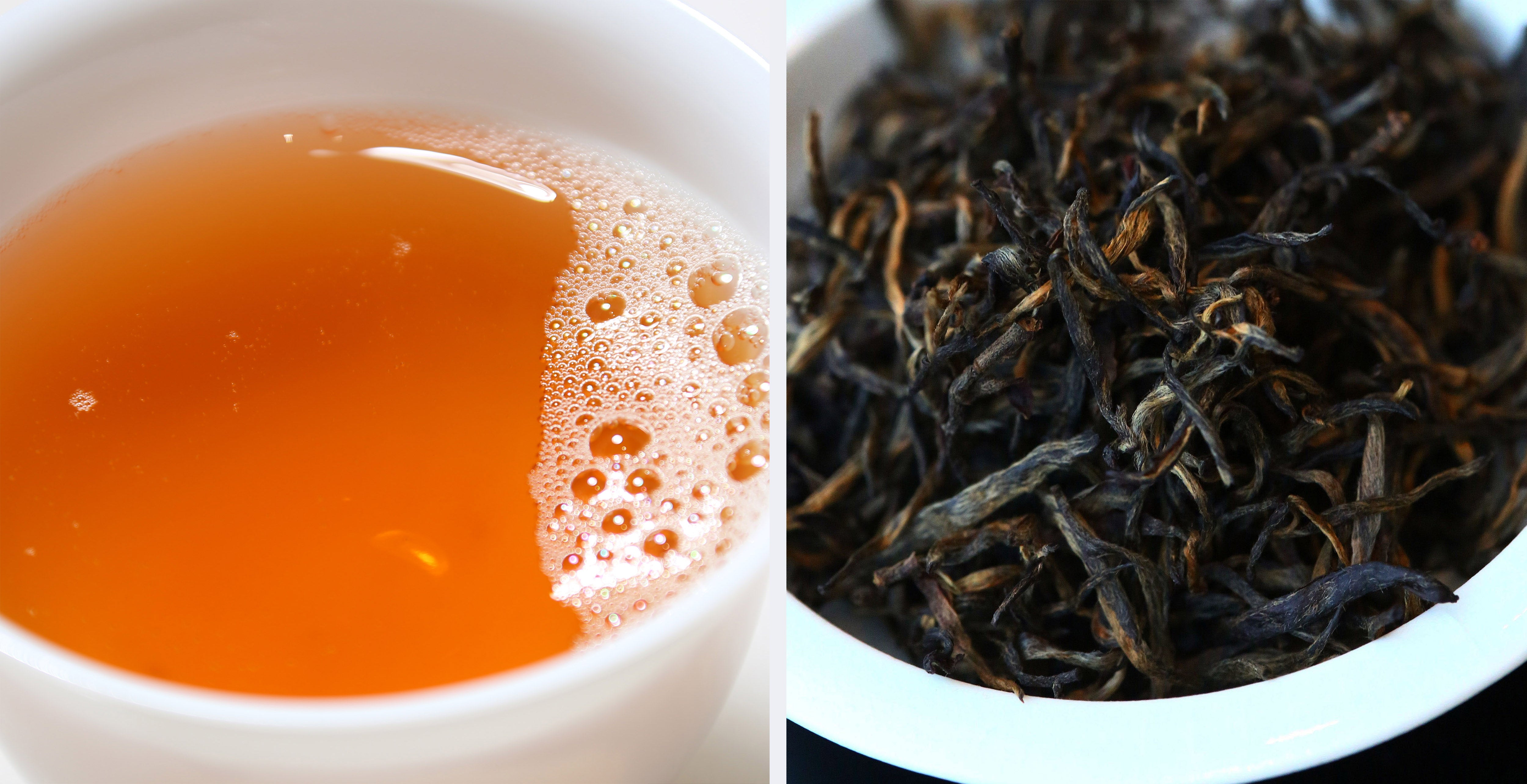
Dry tea appearance: Jin Jun Mei has a small and tight appearance, with fresh and tender buds. The color is a mixture of gold, yellow and black. The golden yellow part is the tea hairs and golden tips, which account for about 30%.
Liquor color: The 2024 Jin Jun Mei tea liquor is golden yellow, with an amber hue.
Aroma : Dry smell/warmed cup : honey and ripe fruit aroma; Brewing: top notes of orchid and peach, middle notes of mellow honey, and base notes of alpine notes; long-lasting aroma at the bottom of the cup , still clear after 5 minutes of steeping.
Taste : Sweet and refreshing on the palate with no astringency, the tea soup is thick and smooth; after swallowing, a sweet aftertaste lingers in the throat (from light sweetness to date sweetness), fresh and refreshing, with a long-lasting aftertaste.
Leaf base : The buds are upright and bronze in color, with a soft and supple feel like silk.
Scientific value:
Active ingredient: Theaflavins content ≥0.8%
Antioxidant properties: ORAC value reaches 12000 μmol TE/g (30% higher than green tea).
Mild and soothing properties: The complex of caffeine and tea polyphenols reduces irritation.
The climate of Tongmu Pass over millions of years has created Jin Jun Mei tea.
Each gram of tea carries a family's 174 years of day-and-night guardianship
Through six generations of tea masters' perseverance
Complex brewing
exacting attention to details
Only to help you taste the true flavor
of tea aroma

With "protecting the buds and preserving freshness, and evenly releasing the aroma" as the core principle, the steps to maximize the presentation of its floral, fruity, and honey-like fragrance and sweet and refreshing characteristics are as follows:

Tongmu Pass Jin Jun Mei Tea Infusion
I. Equipment Selection
The preferred choice is a 100-120ml white porcelain gaiwan: it does not absorb aroma, shows the color of the tea soup, and makes it easy to observe the golden ring and changes in the tea soup;
Second choice: 80-100ml shallow purple clay teapot: suitable for those who prefer a mellow taste, but the pot needs to be boiled in advance to remove any impurities.
II. Water Temperature and Tea Addition
Water temperature: 85℃ (boil water cooled for 30 seconds to prevent scalding of the buds), preheat the utensils to stabilize the temperature;
Amount of tea leaves: 4-5g for gaiwan (tea to water ratio 1:20), 4-5g for Yixing teapot (slightly absorbs flavor, a small amount is enough to release flavor).
III. Serving Time
Rinse the tea: Quickly pour boiling water over it once (only once, to prevent loss of aroma);
The first three infusions: steep for 10 seconds (1st infusion), 12 seconds (2nd infusion), and 15 seconds (3rd infusion) to bring out the freshest floral and fruity aromas;
4-8 infusions: Extend each infusion by 3-5 seconds, and the aroma of honey and dates will gradually emerge;
9. After steeping: Steep for more than 30 seconds, the final brew is still sweet and moist (can be steeped 10-12 times).
Brewing tips:
First: Always brew at a low temperature . If you use boiling water (100 degrees Celsius) for the first infusion, the tea will easily become strong and bitter. After the mouth is stimulated, even if subsequent water temperatures are suitable, the tea will taste weak. This is due to the characteristics of oral sensation. Therefore, using boiling water for the first infusion will cause the tea to lose its original wonderful experience.
This principle applies to all high-grade Chinese teas made from "tender buds," such as Mengding Ganlu and Biluochun. Generally speaking, the more delicate the buds, the lower the water temperature should be; the larger the leaves, the higher the water temperature can be.
2. Watering: Pour water along the wall in a low stream (≤3cm), avoiding direct water flow to the buds;
Thirdly, a single brew of tea should be completed within 20 minutes . If it cannot be finished immediately, store it in a container. When you wish to drink it again, reheat the previously brewed tea, and instantly, the room will be filled with its intoxicating aroma.
Do not leave steeped tea in the gaiwan for an extended period (such as one or two hours) before re-steeping. This is because oxidation occurs, deepening the oxidation of tea polyphenols, weakening the original fresh and crisp flavor, and causing aromatic substances to evaporate, resulting in a bland taste. Such brewing transforms a fine tea with rare qualities into a lackluster drinking experience.
4. Drinking: Let it cool to 55-60℃ for a clearer floral and fruity aroma.
This tip applies to all Chinese teas with exceptional aroma and flavor, especially those with a "highly aromatic" character.
The exceptions are aged Chinese teas and those with a heavily roasted and fermented style, which can be steeped slowly, brewed slowly, or boiled slowly.
For brewing instructions on aged black tea, please refer to " A Guide to Slow-Brewing Aged Black Tea".
一:碱性水对茶的影响
1、对茶汤颜色的影响
绿茶:
碱性条件下,叶绿素易被破坏(叶绿素在 (pH>8.0)时稳定性下降),汤色易从鲜绿转为黄或暗黄,出现浑浊,尤其高温冲泡时更明显。绿茶中的黄酮类物质(如儿茶素)在碱性环境中易氧化,加剧汤色暗沉。
红茶:
茶黄素(明亮橙黄色)在碱性条件下易氧化为茶红素(暗红色),进一步生成暗褐色,导致汤色从红亮转为深暗,失去通透感。
其他茶类:
乌龙茶、白茶、黄茶的汤色可能因碱性水而偏深,黑茶(如熟普)的汤色浑浊度增加,陈香物质的显色稳定性也会受影响。
2、对滋味与口感的影响
成分析出差异:
茶多酚与咖啡因:导致浓度不足、滋味寡淡。碱性环境会抑制茶多酚(苦涩物质)和咖啡因的溶出,茶汤苦涩感减轻。
氨基酸与糖类:破坏氨基酸结构,鲜爽感下降。
矿物质影响:碱性硬水(含较多钙、镁离子)与茶多酚结合生成不溶性沉淀(如 “冷后浑”),导致茶汤浑浊,口感粗糙。
口感平衡:对依赖多酚类物质支撑口感的茶类(如普洱生茶、高焙火岩茶)显著影响茶汤的 “浓醇度” ,回甘不显,整体滋味偏向平淡粗劣。
3、对香气的影响
挥发性香气物质:碱性环境可能加速芳香物质(如醛类、醇类)的降解或转化,导致香气层次单一,尤其是清香型茶(如茉莉花茶、安吉白茶),花香易散,甚至出现 “水闷味”。
陈香与木质香:对黑茶、老普洱等发酵茶,碱性水可能略微凸显陈香,(pH>8.0)会压制果香或蜜香。
二:不同茶类对水质的适应性
1.水的理化特性与茶叶成分的相互作用
- 硬水(>120mg/L CaCO₃):钙离子与茶多酚结合形成沉淀物,降低茶汤涩感(EGCG 结合率可达 23%),但损失抗氧化活性(Food Chemistry, 2018);镁离子促进咖啡因溶出,每升高 1mg/L 镁可使咖啡因浓度增加 0.8%(Journal of Agricultural and Food Chemistry, 2020)。
- 软水(<60mg/L CaCO₃):茶黄素溶出率提升 12%,茶汤亮度增加(L * 值提高 3.2),但氨基酸提取效率降低(Food Research International, 2019)。
2.科学实验数据支持
- 龙井绿茶冲泡实验(TDS = 50 vs 300mg/L):软水组茶汤氨基酸含量(1.2mg/mL)显著高于硬水组(0.8mg/mL),但咖啡因含量低 18%( 中国茶叶加工,2021);感官评价显示,软水冲泡的鲜爽度评分高 1.7 分(9 分制),硬水组醇厚度高 0.9 分。
- 武夷岩茶水质适配研究:含微量硫酸盐(20 – 50mg/L)的水质,可使肉桂特征香气物质桂皮醛溶出量提升 24%(GC – MS 检测),岩韵显著度提高(茶叶科学,2020)。
3.水质选择建议(基于茶类)
| 茶类 | 理想TDS | 推荐pH | 关键离子要求 |
| F.T.L.绿茶 | 30-80mg/L | 6.8 | Ca²⁺<15mg/L,Mg²⁺<5mg/L |
| F.T.L.乌龙茶 | 80-150mg/L | 7 | HCO₃⁻ 40-60mg/L |
| F.T.L.红茶 | 100-200mg/L | 6.8 | K⁺ 2-5mg/L,SiO₂ 10-15mg/L |
| F.T.L.普洱茶 | 50-120mg/L | 6.8 | Fe³⁺<0.1mg/L |
4.特殊水质的影响举例
伦敦自来水(高硬度):冲泡红茶红素 – 钙络合物形成导致 “冷后浑” 提前 30 分钟出现,汤色浑浊度(NTU)达 12.5,较软水组(NTU = 4.3)显著升高(Food Hydrocolloids, 2019)。
日本鹿儿岛温泉水(含硫):硫化物与茶黄素反应生成甲基黄酮类物质,使煎茶鲜味(umami)强度降低 37%(* 日本食品科学工学会誌,2022)。
一方水土一方茶:特定地方取水点的水质对当地茶的色香味有提升,但采用地方水需要系统的专业知识及很高成本。对非专业者而言,掌握「软净水+控温」上述基本原则,远比追求原产地名泉更具实操价值。
精密水茶配适本质是地理基因的对话,需建立在地质学、食品化学、传热学等多学科交叉体系之上,非短短数行网页所能涵盖。
英国AquaSim实验室已实现虎跑泉12项核心指标模拟。但缺失原泉微生物群落(如嗜茶诺卡氏菌),后发酵风味差异达27%。加之操作复杂:需掌握”听泉煮水法”(螃眼初沸立即停火),水温误差超过3℃即破坏呈味平衡。
The charm of tea ceremony lies
in what suits you as precious
A pot of pure water is enough
Don't be trapped by water quality metaphysics
A pot of pure water is enough
Don't be trapped by water quality metaphysics
The charm of tea ceremony lies
in what suits you as precious

Please refer to the traditional Chinese black tea brewing method.
The source of Jin Jun Mei tea – Tongmu Pass

Bubble tea packaging effectively isolates tea from oxygen, light, and moisture, preserving the original aroma and nutrients of the tea for a longer period and extending its shelf life.
storage

Store in a sealed container in a clean, odorless, and dry environment.
The ideal temperature is below 25 degrees Celsius. Avoid direct sunlight and moisture.
Note: Avoid opening the container frequently.
Every time the container is opened, the tea leaves come into contact with air and moisture, which accelerates the oxidation and deterioration of the tea.
Therefore, minimize the number of times you open the storage container.
Shelf life
Long-term storage is possible if the above storage conditions are met.
1-year appreciation period
Aroma: Compared to aged tea, the aroma is fresher, more invigorating, and more pronounced, with a noticeable floral and sweet fragrance, and a high degree of freshness.
Taste: Fresher and more vibrant than aged tea. Upon tasting, the robust inner qualities of the tea leaves are clearly perceptible, with a full-bodied flavor and a rapid and pronounced aftertaste.
Enjoy after 5 years or more of storage
Aroma: The floral and fruity aromas gradually fade, transforming into a rich and deep aged aroma, woody aroma, and camphor aroma, accompanied by a slight medicinal aroma.
Taste: The taste becomes increasingly mellow and smooth. After years of storage, the chemical composition of the tea leaves changes, and the content of irritating substances such as tea polyphenols decreases, resulting in a milder taste, a rich and mellow liquor, a long-lasting aftertaste, and a smooth and delicate flavor with a unique character.






